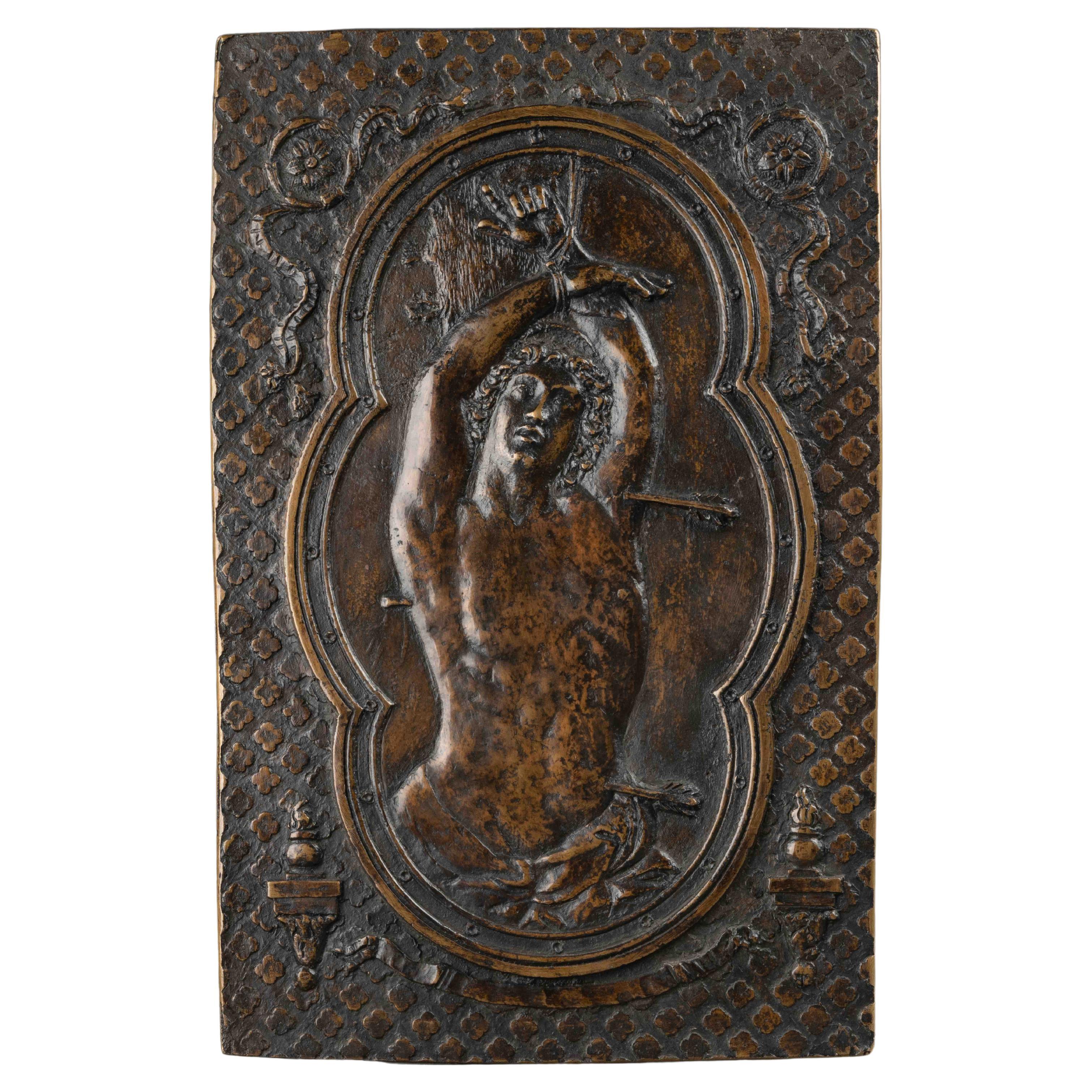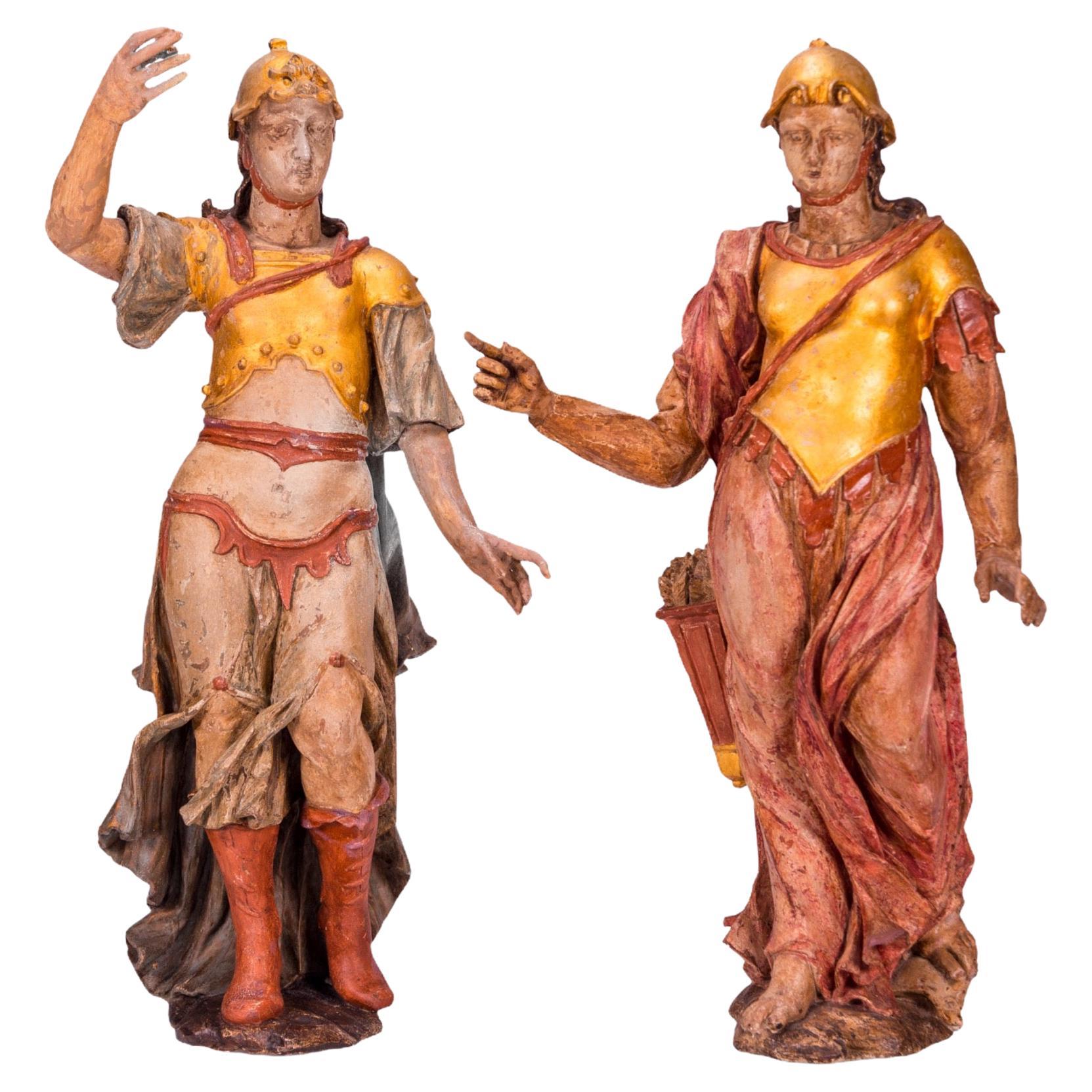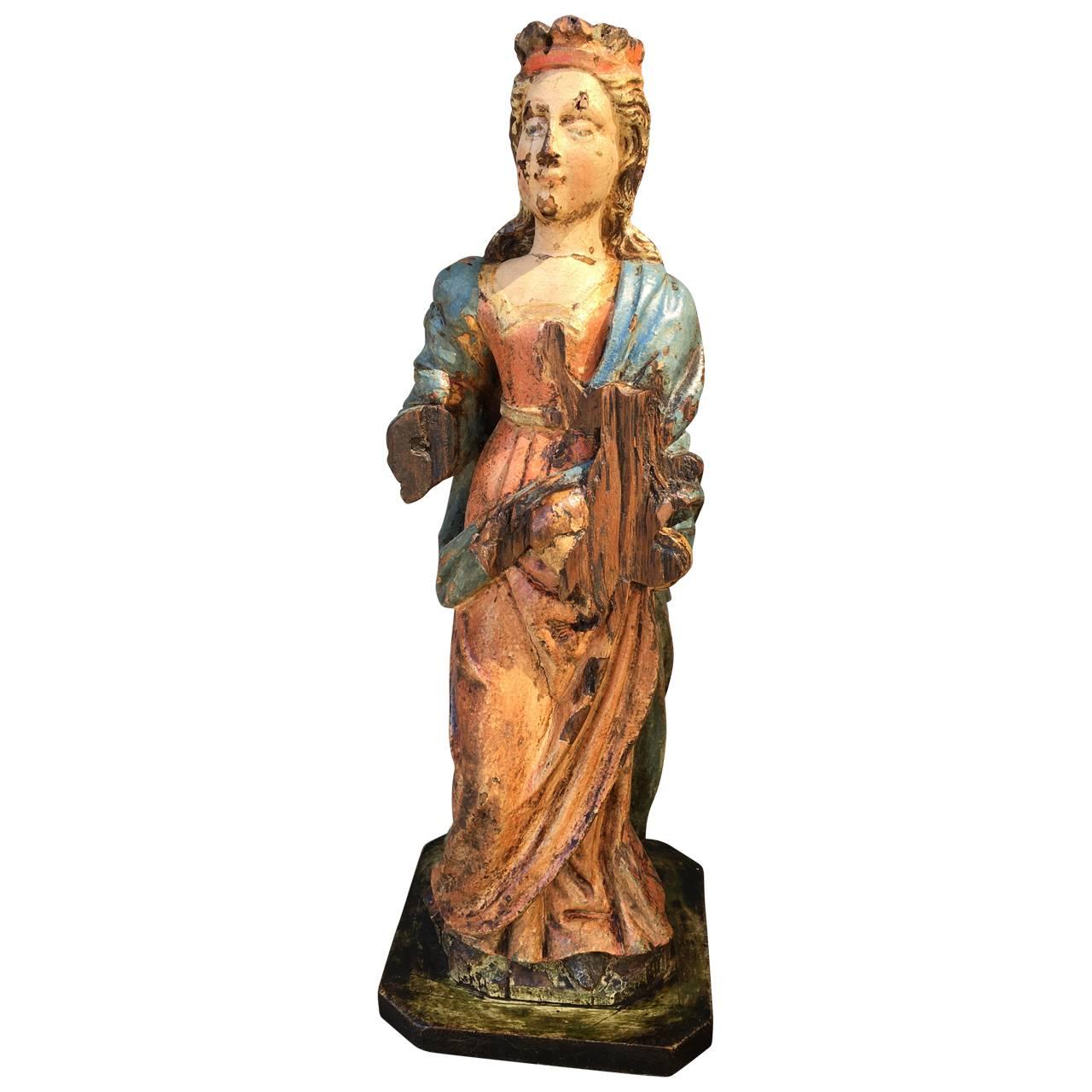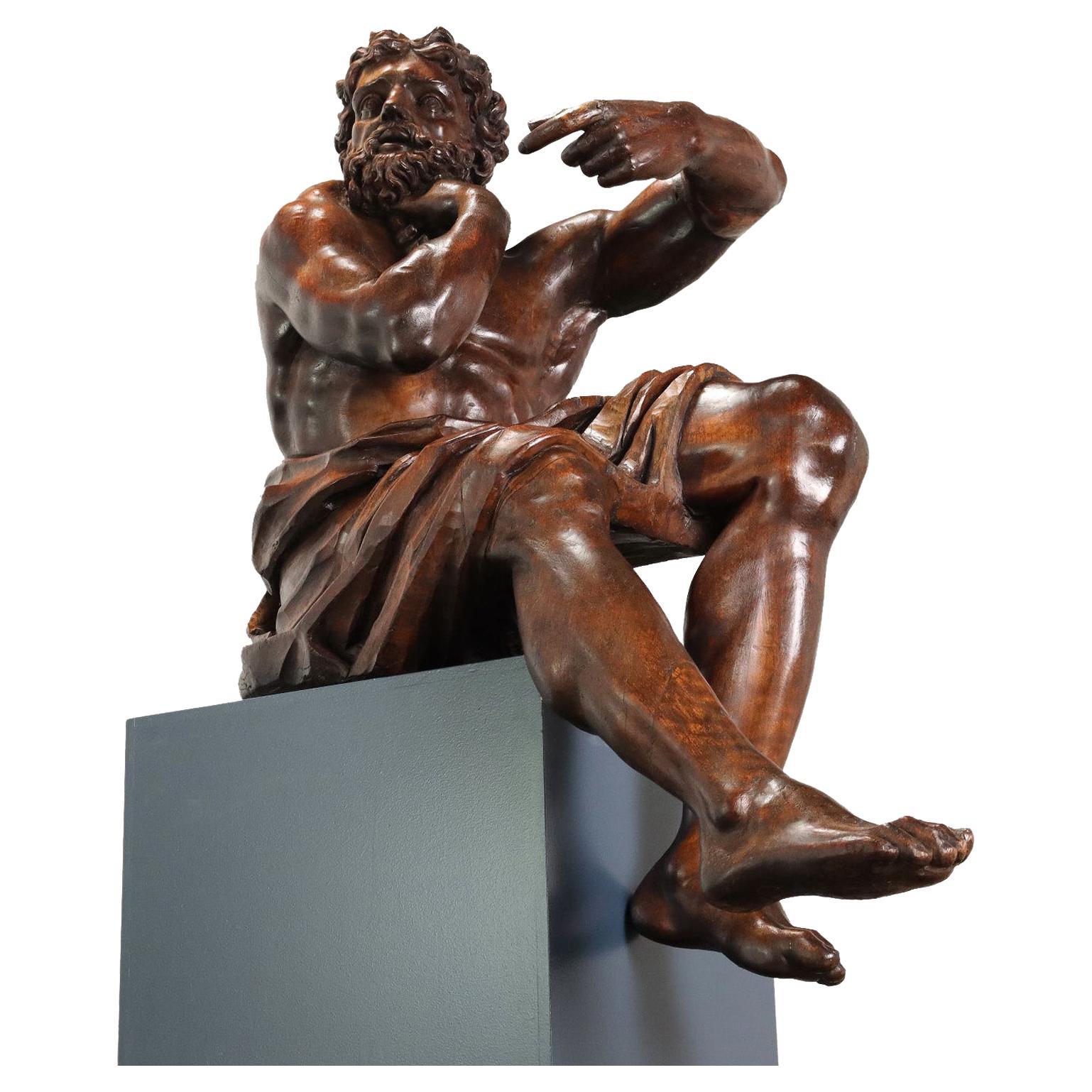Items Similar to A Captive Soldier - Italie (Rome), 17th century
Want more images or videos?
Request additional images or videos from the seller
1 of 6
A Captive Soldier - Italie (Rome), 17th century
About the Item
A Captive Soldier
Gilt Bronze, Lost Wax
Italie (Rome), 17th century
H 17 x Dia 10 cm
H 6 2/3 x Dia 4 inch
The 17th century witnessed a flourishing of artistic expression across Europe, particularly in Rome, where the Baroque movement reached its zenith. Amidst this cultural efflorescence, a bronze sculpture portraying a captive soldier emerged as a testament to the mastery of the period's sculptors. Adorned with captivating gilding, this artwork stands as a beacon of artistic innovation and historical representation.
In the tumultuous political landscape of 17th-century Europe, warfare and conquest were recurrent themes. Rome, as a hub of artistic patronage and creativity, bore witness to the production of numerous artworks reflecting the prevailing socio-political milieu. The portrayal of a captive soldier in sculpture symbolized the triumph of one faction over another, echoing the triumphalism inherent in Baroque art.
The sculpture exemplifies the hallmark characteristics of Baroque aesthetics, characterized by dynamism, theatricality, and emotional intensity. The figure of the captive soldier, rendered with anatomical precision and emotional depth, captures the viewer's attention through its poignant portrayal of vulnerability and resilience. The gilding, meticulously applied to enhance the sculpture's visual impact, imbues it with a sense of opulence and grandeur befitting its subject matter.
Beyond its aesthetic allure, the sculpture holds cultural significance as a tangible artifact of 17th-century Rome. It serves as a reflection of the city's cultural vibrancy and artistic patronage under the auspices of papal and aristocratic commissions.
In conclusion, the 17th-century bronze sculpture depicting a captive soldier, embellished with exquisite gilding, stands as a testament to the artistic prowess and cultural richness of its time. Through its melding of historical narrative, stylistic innovation, and technical mastery, this masterpiece continues to captivate and inspire viewers, offering a window into the enduring legacy of Baroque art in Rome.
- Dimensions:Height: 6.7 in (17 cm)Diameter: 3.94 in (10 cm)
- Style:Baroque (Of the Period)
- Materials and Techniques:
- Place of Origin:
- Period:
- Date of Manufacture:17th century
- Condition:Wear consistent with age and use.
- Seller Location:Bruxelles, BE
- Reference Number:1stDibs: LU6666239322632
About the Seller
5.0
Vetted Seller
These experienced sellers undergo a comprehensive evaluation by our team of in-house experts.
1stDibs seller since 2022
6 sales on 1stDibs
Typical response time: 7 hours
- ShippingRetrieving quote...Ships From: Bruxelles, Belgium
- Return PolicyA return for this item may be initiated within 3 days of delivery.
More From This SellerView All
- Large Cast and Chiseled Bronze Plaque - Saint Sebastian, Rome 17th centuryLocated in Bruxelles, BELarge Cast and Chiseled Bronze Plaque Saint Sebastian after the model by Guido Reni (Capitoline Museum) Rome, 17th century Large rectangular bronze plaque depicting the martyrdom of...Category
Antique 17th Century Italian Baroque Figurative Sculptures
MaterialsBronze
- Cerberus, Italy, 17th CenturyLocated in Bruxelles, BECerberus Black painted stone Italy, 17th century Measures: 80 x 69 x 36cm (one head missing) Cerberus, cruel monster, fierce and strange, Through his wide threefold throat barks as a dog Over the multitude immers'd beneath. His eyes glare crimson, black his unctuous beard, His belly large, and claw'd the hands, with which He tears the spirits, flays them, and their limbs Piecemeal disparts (Dante, Inferno, Canto VI). Cerberus figure seated, in his role of ferocious guardian of the underworld; he shows a nervous musculature, an adherent skin which reveals the ribs, long and robust limbs; his heads are broad and the eyes set well apart. Painted in black to amplify his menacing look, the infernal guardian is depicted with his famous attributes, writhing his heads, growling and barking furiously. Cerberus, in Greek mythology, was the monstrous watchdog of the underworld – also known as the “hound of Hades” – preventing the dead from leaving, and making sure that those who entered never left. A child of Typhon and Echidna, he was part of a monstrous family, which included Orthus, the Lernaean Hydra, and the Chimaera as well. Only on three occasions Cerberus was tricked by visitors of Hades: Heracles did it with his strength, Orpheus with his music. In "The Inferno", Dante places Cerberus as the guardian of the third circle of Hell. With his three mouths, Dante saw Cerberus as a beast that was synonymous with the sin of Gluttony. Virgil gets past the monster by throwing mud in his three mouths, temporarily choking him. Very rare are the representations of Cerberus in ancient statuary...Category
Antique 17th Century Italian Renaissance Figurative Sculptures
MaterialsStone
- Marble Lion, Périgord, 17th CenturyLocated in Bruxelles, BEMarble lion white marble France, probably Périgord, 17th century Small marble lion wearing a coat of arms pendant with the engraved date, ...Category
Antique 17th Century French Renaissance Animal Sculptures
MaterialsMarble
- Large Terracotta Relief - Lombardy, First Half of 17th CenturyLocated in Bruxelles, BELarge Terracotta relief of the flight into Egypt Lombardy, first half of 17th century Painted terracotta 91 x 85 x 11,5 cm This event in the early life of Christ is recounted i...Category
Antique 17th Century Italian Baroque Figurative Sculptures
MaterialsTerracotta
- Italian Memento Mori skull - 17th centuryLocated in Bruxelles, BEItalian Memento Mori skull Marble North of Italy, 17th century H 9 x L 7 x P 14 cm At the turn of the 16th century, they were the height of fashi...Category
Antique 17th Century Italian Renaissance Figurative Sculptures
MaterialsMarble
- Plateau with two breasts, attribute of Saint Agatha - 17th centuryLocated in Bruxelles, BEPlateau with two breasts, attribute of Saint Agatha Southern Italy, 17th century Polychrome and gilded wood 20 x 14,5 x 15 cm Born into a noble lineage, Agatha came into the world ...Category
Antique 17th Century Italian Baroque Figurative Sculptures
MaterialsWood
You May Also Like
- Pair of angels in gilded wood Rome 17th centuryLocated in Milan, ITRome, 17th century Pair of angels Gilded wood, cm h 92 - Base, cm 25 x 40 The pair of putti examined is a masterpiece of the Roman Baroque period, a period of pomp and opulence w...Category
Antique 17th Century Italian Figurative Sculptures
MaterialsWood
- Archangel Sculptures, 17th CenturyLocated in North Miami, FLA pair of late 17th Century Italian Baroque carved wood, gold gilded and polychromed Archangel sculptures mounted on Lucite bases.Category
Antique 17th Century Italian Baroque Figurative Sculptures
MaterialsGold Leaf
- Early 17th Century SculptureLocated in Copenhagen, KAmazing Baroque sculpture of a woman wearing a crown in original paint. Her hands are missing. Colors are untouched, recently cleaned off from a thick dark coating, I have images fro...Category
Antique Early 17th Century French Baroque Figurative Sculptures
MaterialsOak
- Walnut Baroque Sculpture, Italy, 17th CenturyLocated in Milano, ITBaroque sculpture in walnut, central Italy 17th century. The male figure, created to be seen in an elevated position with respect to the observer and originally part of a larger scul...Category
Antique 17th Century Italian Baroque Figurative Sculptures
MaterialsWalnut
- 17th Century Sandstone Gargoyle on StandLocated in Vosselaar, BEA early 17th century French Gargoyle. Gargoyels were originally intented as waterspouts for churches and castles but soon were used as ornamentation. A...Category
Antique 17th Century French Baroque Figurative Sculptures
MaterialsSandstone
- IMPORTANT ITALIAN IMPERIAL EAGLE 17th CenturyBy Europa AntiquesLocated in Madrid, ESIMPERIAL EAGLE Italian, 17th Century sculpture in carved and gilded wood, based on a base decorated with plant motifs and masks with two claw and ball-...Category
Antique Late 17th Century Italian Baroque Animal Sculptures
MaterialsWood





